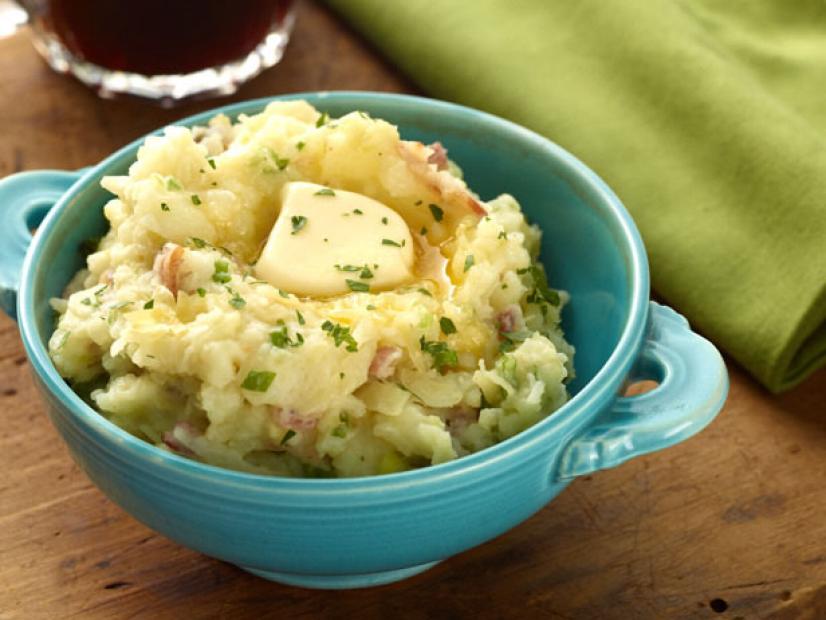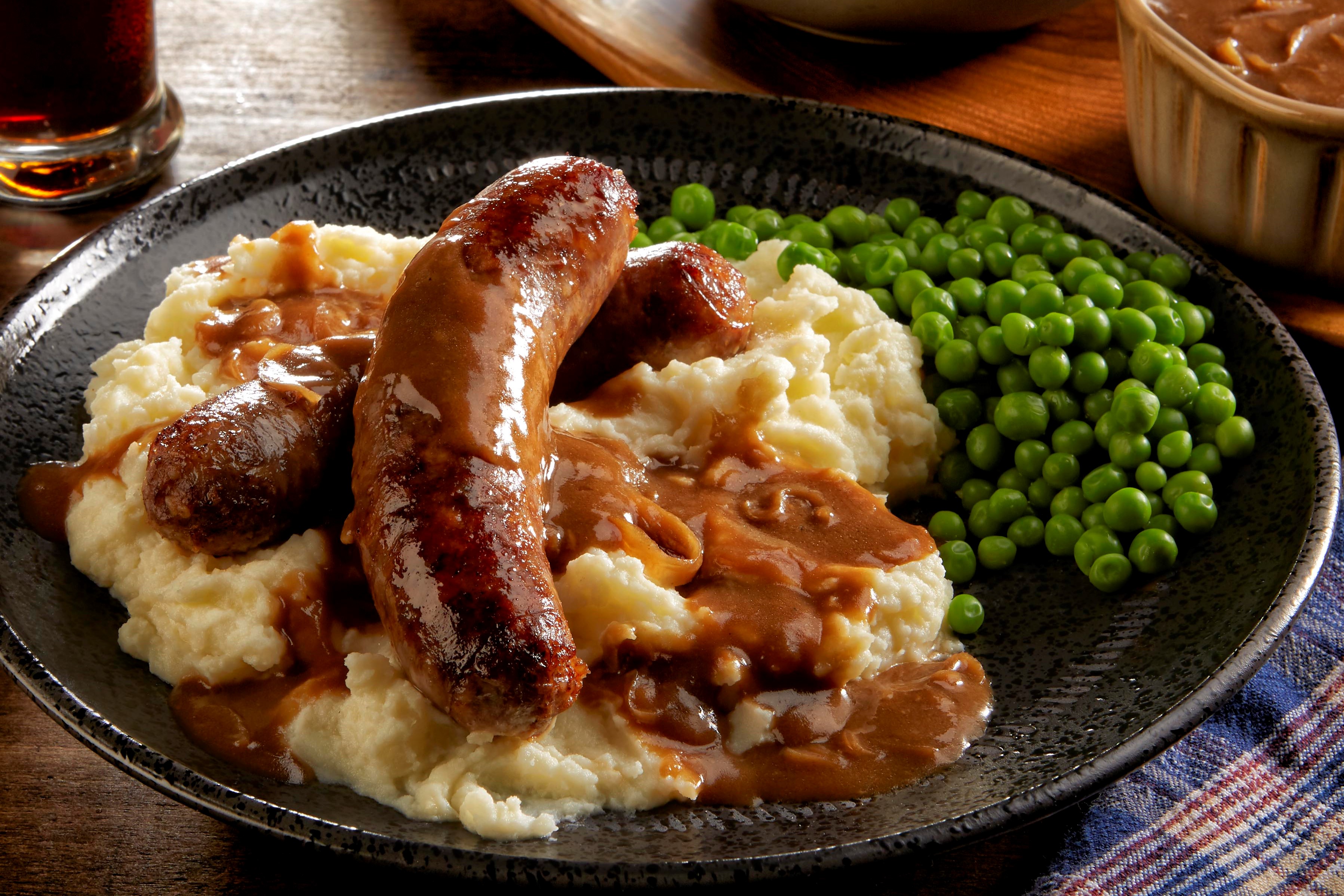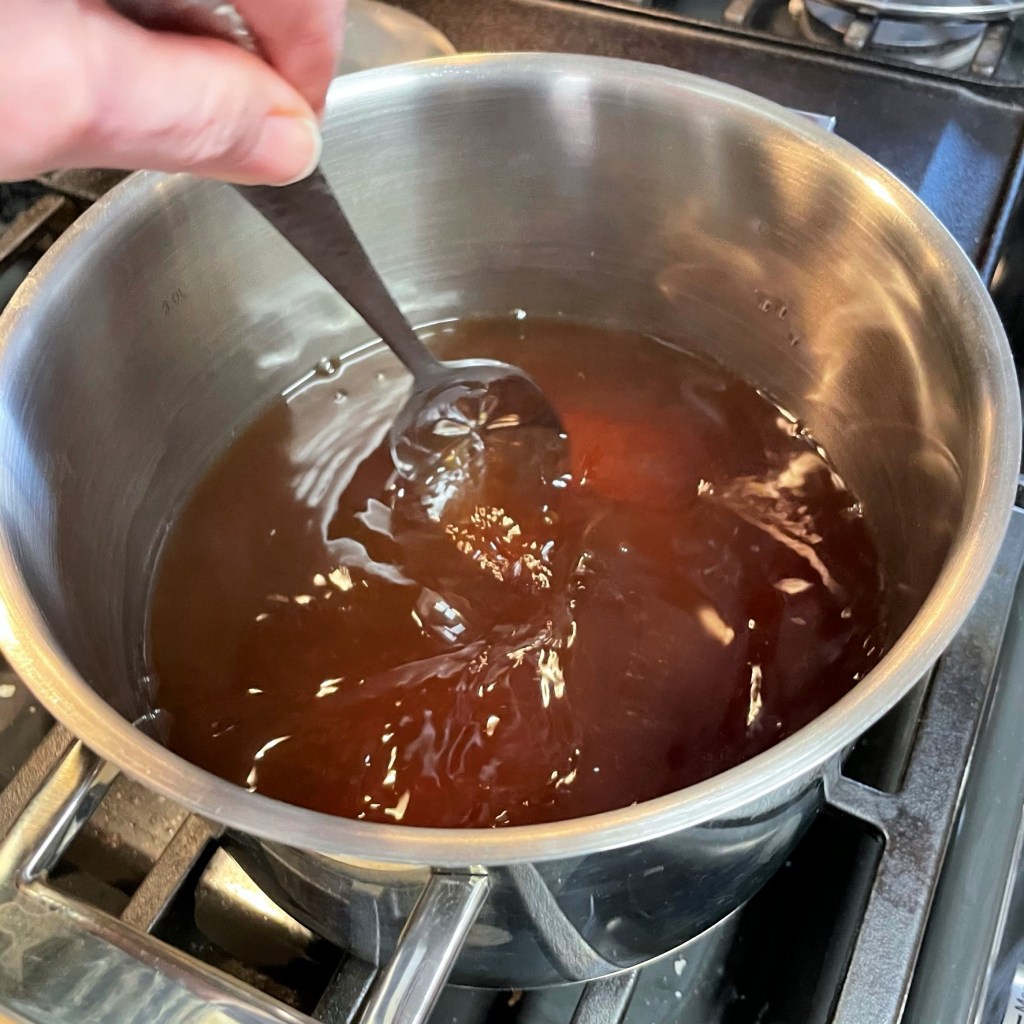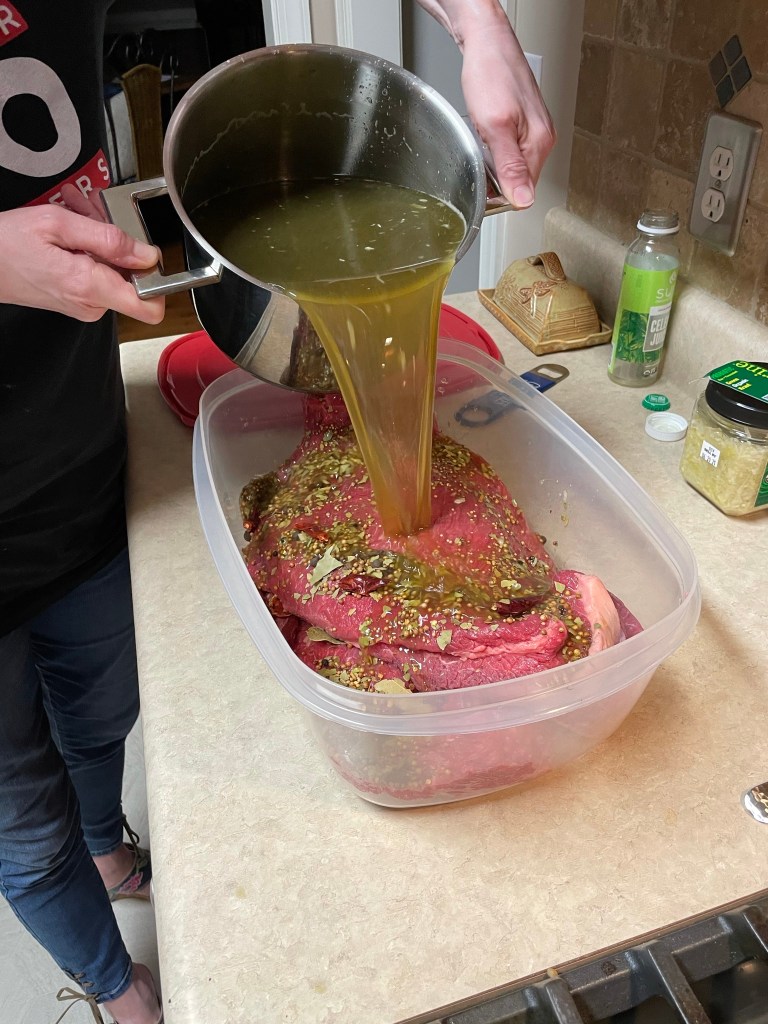Today is March 9, and we need to talk about St. Patrick’s Day. Why the urgency, you may ask, with eight days to go? In our home, the food preparation for this fun holiday has already begun, in that we have started the brining process for our annual home-cured corned beef. Several years ago, I swore off meats processed with unnecessary nitrate and nitrite chemicals, and though it’s easy enough today to find commercially prepared “uncured” versions of corned beef in supermarkets such as Whole Foods, I get a kick out of doing it myself. This year, my husband, Les, and I purchased two large grass-fed briskets for this purpose. One will be a traditional corned beef preparation, and the other will travel an extra mile to become pastrami. The brining step takes anywhere from seven to 10 days, so we started ahead accordingly.
If this sounds exciting to you, then hightail it to the market today or tomorrow to procure the necessary supplies, and you’ll find directions for brining at the end of this post. Otherwise, sit back and relax for a brief “did you know” lesson on some of the dishes we think of this time of year, and a sneak peek at what I’ll be preparing in the week ahead. For many Irish-Americans, this mid-March holiday is usually a time for lively street parades (especially in Boston and New York), the wearing of the green (lest ye be pinched), toasting to good health with a pint (green or otherwise), and feasting on corned beef and cabbage, colcannon, bangers and mash, or Irish soda bread. But how authentic are these “St. Patrick’s Day” foods, really?
I’ve done some research this week, and honestly, it’s hit-or-miss. But in searching out stock photos from the internet, I’m drooling a bit, just thinking about these delectable foods!
Corned beef is associated with Ireland, but it originated in the U.S., where Irish immigrants found beef to be plentiful and more affordable than in their native land. Traditional Irish cuisine leans more heavily on proteins that are native to the land, including lamb and fish.
Colcannon, a mixture of cabbage and mashed potatoes, is an authentically Irish food, but is traditionally made around Halloween, not St. Patrick’s Day. Playful (or superstitious) cooks might still hide coins or lucky charms (not the cereal!) inside, giving dinner guests a chance at good fortune, though it sounds more like a good shot at a trip to the ER, or perhaps a ruse to convince children to finish their vegetables.
Bangers and mash is a rustic dish of sausage (usually pork or lamb) on top of mashed potatoes with onion gravy. This dish is definitely original to Ireland, as well as other parts of the U.K., and it earned its nickname because of the sound the moisture-heavy sausages made when they “popped” during cooking. I love bangers and mash with Guinness-based gravy, and the immature side of me just thinks it’s fun to say “bangers and mash.”
Finally, soda bread, long considered to be an original Irish food, technically isn’t. Culinary historians credit Native Americans as the first to use soda ash as a leavening agent in bread, but Irish immigrants to the new country quickly recognized the technique as a means to enjoy bread during yeast shortages. When baking soda became available in the U.K., the Irish adopted the chemical leavening trick to make breads from the stuff they had on hand—soft, low-protein wheat flour and sour or cultured milk.
I love food history, and even though some of these foods are questionable in their authenticity to St. Patrick’s Day, I’ll be making (and sharing with you) some version of all of them between now and next week.
Our corned beef is already underway, and if you’d like to play along at home, here’s how to begin. As I mentioned, I do not use the nitrate chemical known as “curing salt,” and it is not necessary for home-cured corned beef. The intended purpose of curing salt is to inhibit growth of bad bacteria while the meat is brining, but between modern refrigeration and the natural nitrites that occur in another ingredient I use, my brisket is well protected. One noticeable difference in nitrate- and nitrite-free corned beef is the color; mine will not have the rosy hue you see in commercially processed corned beef. The flavor, however, is exactly the same (or better).
Essential gear
You will need a container for brining the corned beef. It should be large enough to hold your brisket, plus about a gallon of liquid brine mixture. Choose a non-reactive, sealable vessel for this purpose—in other words, do not use a metal pot! A plastic container with a tight lid is fine, as is a food-grade plastic brining bag (plus a container large enough to hold it). Depending on your container, you may also need a non-reactive bowl or plate heavy enough to weigh down the brisket so that it is fully submerged at all times. For cooking the brined brisket, any slow cooker, roasting pan or Dutch oven will do, but you won’t need that until next week. You will also need enough space in your fridge for said container.
Essential tips
Prepare your brining liquid in advance, and allow time for it to cool completely before adding your brisket. I’ve seen some recipes that begin with cold water, and that may be OK, but the coarse salt and sugar will dissolve better and more quickly over heat, so I usually warm the liquid to incorporate those grainy ingredients, then cool it down (usually with ice cubes) before adding the rest. Do not pour warm brine onto the brisket—this would promote bacteria growth.
Essential Ingredients

4- 5 pound beef brisket, preferably flat-cut, trimmed of excess fat
3 quarts filtered water
About a cup of kosher salt or coarse sea salt* (see notes)
About 1/2 cup dark brown sugar
1 packet or bottle of pickling spices*
Optional Ingredients

12 oz. bottle Irish ale*
12 oz. bottle celery juice*
1/2 cup real fermented sauerkraut brine*
*Notes
Kosher salt and coarse sea salt are about the same by volume and can be used interchangeably here. You can also use canning and pickling salt, or fine-textured sea salt, but because the crystals are much smaller, you should use slightly less (somewhere between 3/4 and 7/8 cup). Do not use table salt containing iodine.
Pickling spice is a blend of dry ingredients, usually including peppercorns, mustard and coriander seeds, allspice berries, ginger, garlic, bay leaves and sometimes chile peppers. You could whip up your own blend if you so desired, but the simplest thing to do is purchase a jar of spices ready to go. McCormick makes a good one that you will find in the regular spice aisle of just about any supermarket. You will use the entire bottle, and you may as well pick up two of them so you’ll have extra spices later for cooking your corned beef.
The remaining ingredients are optional, but I’ll explain here why I use them. A few years ago, a guest at our big Super Bowl party had left behind a growler jug of a local IPA that was much more “hoppy” than beers we usually enjoy. Not wanting to waste it, I glugged about a pint of it into our corned beef brine, and it was fantastic. Every year since then, I’ve put a bottle of Irish ale into the recipe and it always turns out great with that little extra layer of flavor. I think a bottle of Guinness would be great, too.
Celery juice powder is a natural source of nitrites, one of the same chemical additives in commercially processed corned beef. I haven’t yet seen the powder available anywhere, but my supermarket carries celery juice in the same refrigerated section as kombucha and probiotic drinks. Check the ingredients of any celery juice product you choose. This one I use is only celery juice and a hint of lemon juice. I don’t want to know who is actually drinking this stuff, but I’m glad it’s available. 🙂
Real sauerkraut is a naturally fermented product, containing loads of healthy probiotics. Good bacteria threaten bad bacteria, so a few splashes of the brine from the natural sauerkraut is my extra security measure during the brining process. I would not recommend using the brine in canned sauerkraut, as it likely contains vinegar and who-knows-what else. But if your kraut came from the refrigerated case, and the ingredients listed on the package are only cabbage and salt, and it says “naturally fermented” or “live cultures” somewhere on the jar, you’re good to go. Hang onto the sauerkraut for all the yummy Reuben sandwiches you’ll make next week.
About the pink color:
I’ve tried a few other tricks to get the reddish color that is typical of commercially produced corned beef, but most did not work and others were only nominally effective. If you feel inclined, try adding about a cup of pure beet juice to the brine (more seems to affect the flavor), or try some beet powder if you can get your hands on it. But if you can overlook the idea of artificially enhanced color, I promise the flavor of home-cured corned beef is even tastier than the pink version you grew up with. It’s a good trade-off.
Ready? Let’s do this!
- Heat about 3 quarts of filtered water to a near boil, then turn off the heat.
- Add kosher salt and brown sugar. Stir until dissolved, then toss in a couple of cups of ice to cool it down.
- When the brine is fully cooled, add the Irish ale, celery juice and sauerkraut brine.
- Place your brisket into the non-reactive container. Sprinkle the pickling spice over the top of the meat. Carefully pour the cold brine over the meat.
- Use a heavy, non-reactive plate or dish to hold the brisket under the brine liquid. You don’t want the top or any edges exposed to air while the curing takes place. I usually use a flat-bottomed Pyrex dish to press it down, and when I seal the container, it becomes sort of wedged to keep the brisket from floating to the surface.
- Refrigerate on the lowest shelf of your refrigerator for at least 5 days for a smallish brisket, or up to 10 days if your brisket is on the larger side. Check on the brisket each day, and turn it so the brine and seasonings make their way into every fiber of the meat. Keep it submerged.
If you don’t have room in the refrigerator, you can do the brine step in a cooler. Be sure the container holding the brisket and liquid is fully sealed, and refresh the ice as needed to keep it cold for the duration of the brining process.
When brining is complete, rinse the brisket under cold running water for several minutes, then proceed with cooking as usual.
Are you gonna try it?
Later this week, I’ll post my recipes for Irish soda bread and “bangers and mash.” Stay tuned!















Pingback: Corned Beef Shepherd’s Pie | Comfort du Jour
Pingback: Not Quite Katz’s (but darn good pastrami) | Comfort du Jour
Pingback: DIY Corned Beef—Done! | Comfort du Jour